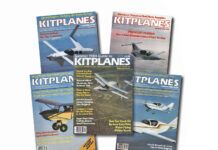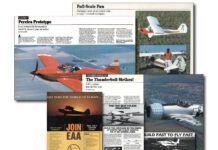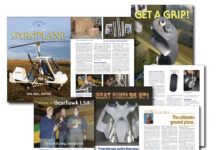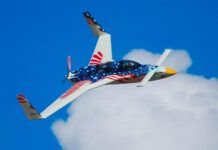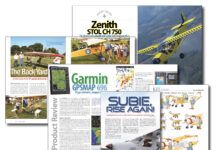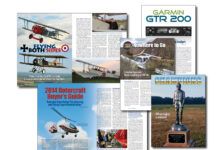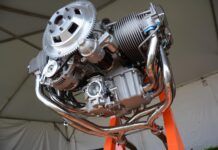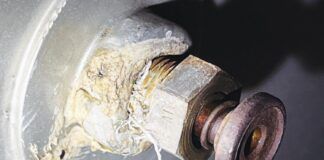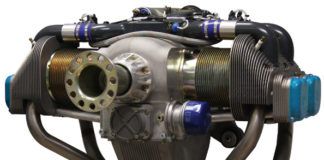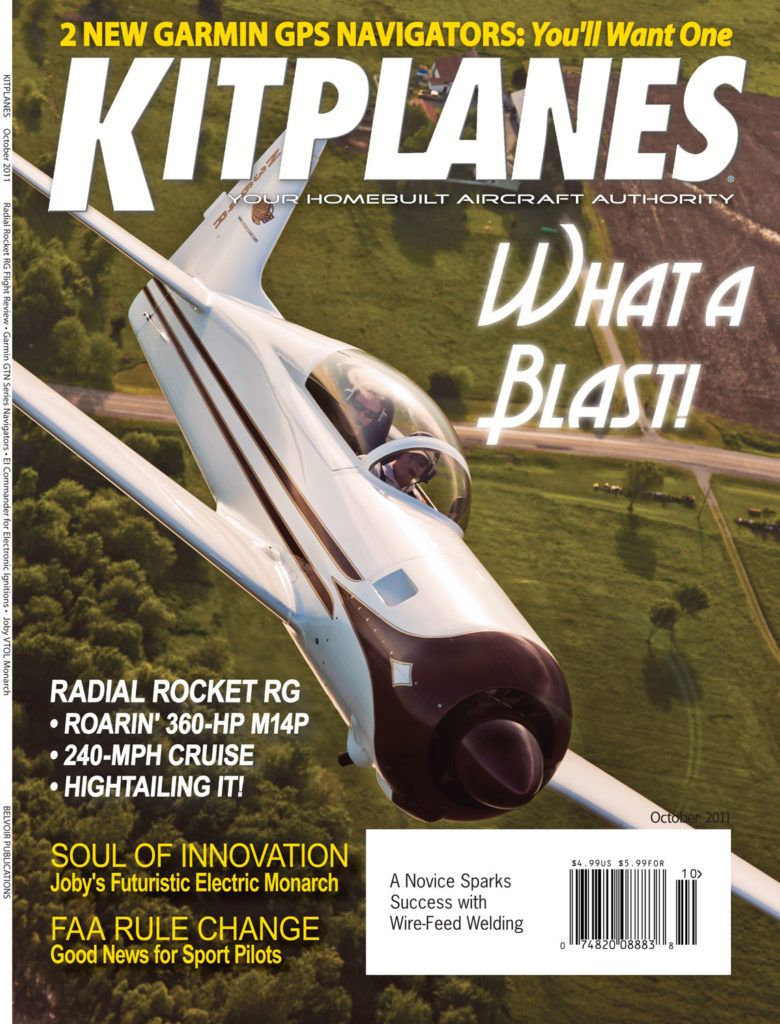 Jeff Ackland’s Radial Rocket was our cover subject 12 years ago this month. Ed Kolano’s flight review began by exploring the most obvious change since we’d first flown the Rocket: “Note the fixed-gear tailwheel arrangement has been replaced with retractable tricycle legs, which adds about 60 pounds to the plane’s empty weight. With the tri-gear development flight testing nearing completion, the company is now offering both versions. Makes sense from a potential customer pool perspective. The tailwheel version does look aggressive, perhaps even intimidating. Then again, some pilots simply prefer a nosewheel.” While the Radial Rocket’s performance promised a 210-knot cruise and 2000 fpm of climb, there was more to it than that. “It is nigh on impossible (that’s right, nigh on) not to get caught up in the baby fighter mystique in the Radial Rocket. Stick in your right hand, throttle in your left, nobody sitting beside you…what’s a pilot to do? Maneuver. Have fun with it, and there’s plenty of fun to be had,” said Kolano.
Jeff Ackland’s Radial Rocket was our cover subject 12 years ago this month. Ed Kolano’s flight review began by exploring the most obvious change since we’d first flown the Rocket: “Note the fixed-gear tailwheel arrangement has been replaced with retractable tricycle legs, which adds about 60 pounds to the plane’s empty weight. With the tri-gear development flight testing nearing completion, the company is now offering both versions. Makes sense from a potential customer pool perspective. The tailwheel version does look aggressive, perhaps even intimidating. Then again, some pilots simply prefer a nosewheel.” While the Radial Rocket’s performance promised a 210-knot cruise and 2000 fpm of climb, there was more to it than that. “It is nigh on impossible (that’s right, nigh on) not to get caught up in the baby fighter mystique in the Radial Rocket. Stick in your right hand, throttle in your left, nobody sitting beside you…what’s a pilot to do? Maneuver. Have fun with it, and there’s plenty of fun to be had,” said Kolano.
Paul Bertorelli highlighted the then-new Garmin navigators set to replace the still-popular GNS 430 and 530 models. “In the 13 years since the GNS 430 appeared—yes, 13 years—display, processor and GPS technology have all but reinvented themselves, and the new GTN boxes integrate those advances. The displays remain the TFT technology that’s now industry standard, but the resolution is higher. On the 650, it’s 600×266 pixels, while the 750 has 600×708 pixels. That’s about a fivefold increase in pixel density.” He concluded with, “These two products are exactly what you might expect. They represent a substantial, incremental improvement over the GNS line, but they aren’t revolutionary in capability. They are, after all, selling into a replacement retrofit market.”

We featured a very detailed examination of an engine swap in Bill Repucci’s RV-9. He moved from the very light Lycoming O-290 to the 180-hp O-360, documenting the process—including the 78-pound weight gain with the swap. Repucci concluded the story: “The question you’re probably asking doesn’t yet have an iron-clad answer: Was the 180-hp upgrade worth the effort? As we discussed in the previous installments, the difference in weight and cost between the O-320, O-340 and O-360 engines was minimal. At this point, I’m happy with the takeoff and climb performance (and relieved that the airplane still handles marvelously), and I’m looking ahead to finding ways to reduce cruise fuel consumption to accommodate the 9’s smallish tanks. In a sense, though, that’s all in the noise. Right now, I’m just thrilled to have an airplane to fly again.”
Longtime contributor Dave Prizio documented Wendell Solesbee’s Lancair Evolution project in the second part of the series. Besides detailing the construction process, Prizio went over the numbers, which were impressive. “First of all, the kit costs $495,000. That is a lot of money, but it includes a lot of things ordinary kits do not. Besides the parts that you would expect, it includes a complete pre-wired instrument panel featuring a Garmin G900 EFIS suite. That is worth over $100,000 all by itself. If you buy a new engine for your Evolution, you can expect to shell out about $464,950 for that, plus $32,500 for the propeller and $84,000 for the firewall- forward package Lancair supplies. A used mid-time engine such as the one the Solesbees purchased can cut $200,000 or so off of that number,” wrote Prizio. Bottom line? Somewhere near $1 million, less your labor, of course.


